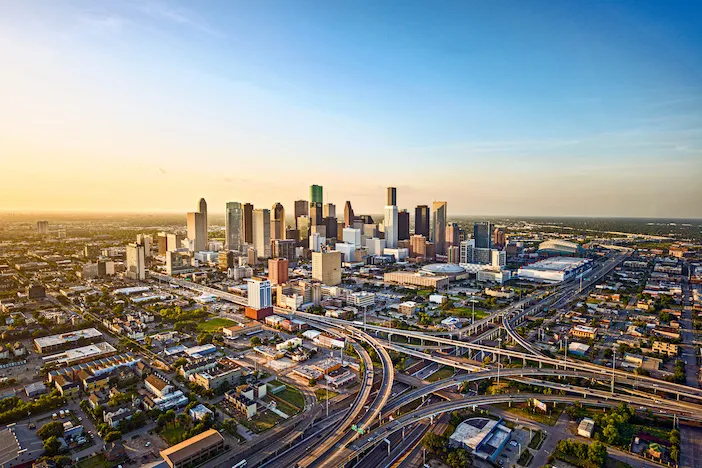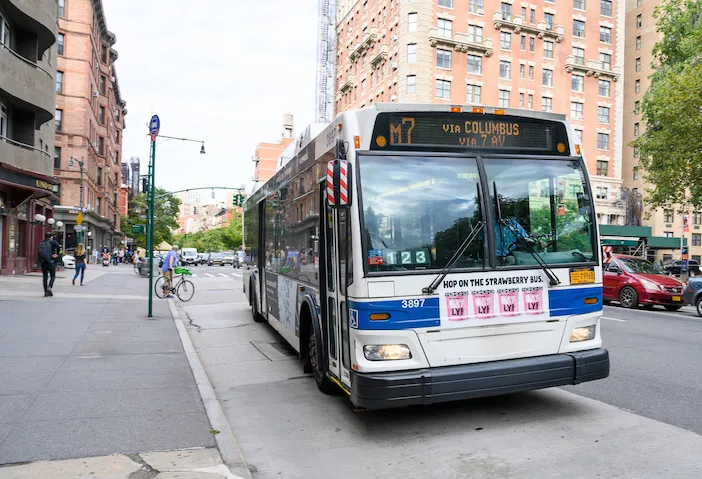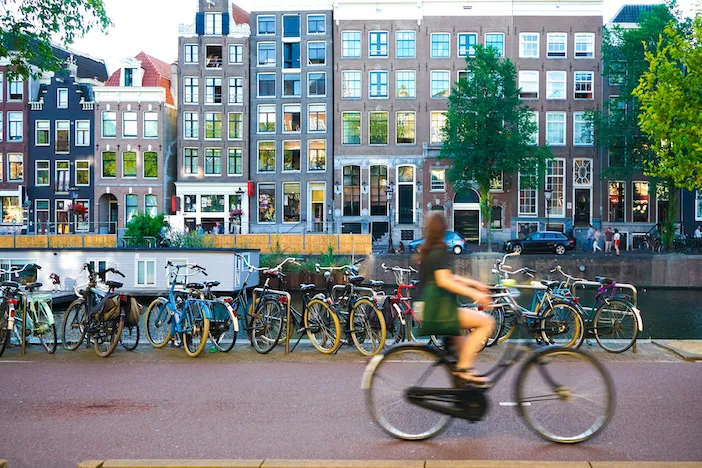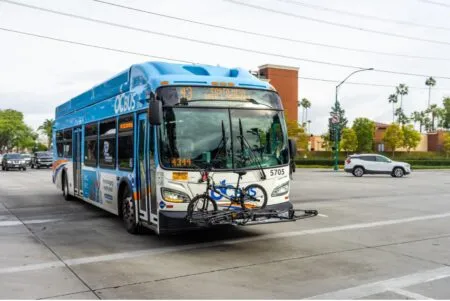Anna Allwright, strategy specialist, Cubic Transportation Systems, discusses the evidence that shows how multimodality holds the key to a more sustainable, equitable transportation system
As we look to navigate this topic, it’s important to call out that no form of transportation is intended to be excluded. We are looking to shine a light on the importance of underserved modes of transportation that would benefit the collective whole of the population and the planet.
According to the International Energy Association’s Tracking Transport 2020, “transportation is responsible for 24% of direct CO2 emissions from fuel combustion.” Sustainable transportation can keep this number from rising.
Sustainable transportation is any mode of transportation that has the lowest possible impact on climate emissions, pollution and infrastructure. Most people automatically think of bicycling and walking when it comes to sustainable transportation, but carpooling or using public transport is another option. Even walking or riding a bike to the nearest bus stop or train station rather than driving there can make a big impact.
When it comes to sustainable transportation, the end goal is to reduce the number of single occupancy vehicles on the road. Looking at this from an equal opportunity lens, it’s important that the options provided are sustainable for the whole community – not only those with credit cards or smartphones.

In the US, roads were purposely built to divide communities, which naturally contributes to less opportunities for the entire population to access public transportation. While there are active initiatives to solve this, there are still ongoing issues delaying the end goal. In fact, the introduction of electric vehicles has actually compounded the issue because they are not affordable or accessible. Lower socioeconomic groups are unfortunately hit the hardest because their options are limited the most.
One of the biggest reasons the US is still lagging behind is because of its size. Cities that have weaker public transportation offerings are those with urban sprawl, while the cities with dense populations have better success. The US has prioritized roads as the main mode of transportation because historically our government has incentivized driving. Although it’s at an all-time high right now, gas in the US is usually more affordable than in other countries, which further dilutes the user base that will be using public transportation. Further, the US approaches public transportation like a social service vs. the mode of choice – outside of large cities like New York City.

The case for sustainable transportation
When making the case for the importance of sustainable transportation, there are a few key points to dig deeper into:
- Emissions – Transportation takes up a big piece of the emissions and pollutants that are produced. Something as simple as timing and frequency of delivery vehicles can make a big impact with cutting down on emissions. A natural benefit of reducing emissions is the improvement of air quality, which would improve the overall health outcomes of our population and our planet.
- Mobility – This is critical for people to access opportunities like getting to an existing, new or higher paying job without having to use a large portion of their salary to do so. Having sustainable transportation will also grant people more seamless access to healthcare and other resources to enrich their lives.
- Congestion – Single occupancy vehicles take up more space compared to public transportation options. There needs to be room to purchase, park, drive and fuel all of these vehicles, which continues to compound the amount of space needed. Idling vehicles stuck in traffic plays a significant role in growing emissions.
- Productivity – Introducing more footpaths, bike and bus lanes would create opportunities for reliability in transit networks. For example, when London added congestion pricing on cars downtown, bus times improved performance.
- Well-Being – Sitting in traffic can be stressful and draining for productivity. When public transportation is working well to support the community, this stress can be alleviated, and our cities can become more productive due to the increased connection, stimulation and vibrancy and the decrease in isolation that comes from bringing communities together.
Countries paving the way
There are several countries ahead of the curve that the U.S. can look to model itself after. They include, but are not limited to:
- Sydney, Australia – Overall Sydney has an excellent public transport network because users know how to use it and have embraced it. The city’s transportation agencies have been consolidated into one, which allows for greater efficiency.
- London, England – London has taken measures to actively discourage driving by creating congestion zones, ultra low emissions zones, limiting parking, etc. At the same time, the city is investing in infrastructure (e.g. bike lanes) and education (teaching kids how to ride bikes, cross the road, use transport).
- Amsterdam, Netherlands – There is a mindset of pursuing active modes of transportation and renewable energy in Amsterdam, and the government promotes sustainability.

Turning a red light into reality
Flexibility, reliability and ease of use are all critical for a sustainable transportation uptick in the U.S. Regardless of which options begin to gain traction, education and trust are paramount. Contactless payments are part of the answer, but not the whole answer. Transport agencies that have tried to go contactless have failed a majority of the time with only 5-6% adoption rates.
In regards to a realistic timeline, there are underpinning themes in the Infrastructure Investment and Jobs Act (IIJA) that focus on sustainability, accessibility, equity and more. If it is successful, we should begin to see transformation within the next five years. It’s estimated that public transport ridership will take three years to get back to pre-Covid status, and from there, a lot of legwork needs to be done by 2030 at the latest to get the US to where it needs to be. One of the biggest hurdles to overcome is political will as there is a lot of money tied up in lobbying.
The Road Ahead
It all begins with a plan to get the transportation system to a point where incentives can be used towards the supply and demand as well as using the network as a policy instrument to make goals work. Reliability is key so people can ensure execution on their journey. It will also be important to put programs in place that encourage behavioral change for emissions targets and equity. In order to get users to change their behavior, the industry needs tools to make it all come to life.
Let’s face it: for the majority of Americans, driving is the most convenient way to get anywhere, and we are not encouraging demonization of it. We are trying to promote alternative and inclusive options that can healthily compete with driving and are as attractive to users as driving is. If we all work together, we will get there!





